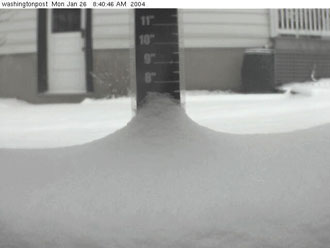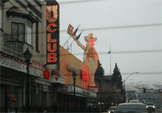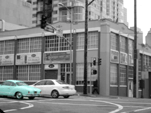i think i need to add a "things to do list" to this page and cross them off as i accomplish them....the first thing on the list would be to watch this movie. i've put the trailer here ---->The Triplets of Belleville
1.27.2004
posted by [ j e n n ] at 2:56 PM
1.26.2004
i think it's time to start thinking competition again....and maybe this time by myself---can it be done? ideas of interest that i've stumbled upon so far :
1 CONCOURS D'IDEE de la manufacture des Paysages 2003-2004.
2 shrinkingcities : Welcome
posted by [ j e n n ] at 10:41 PM
Baumessen yearly Swiss Eshibition - well, it looks like we missed it this year. Put it on the list of things to do for 2005. Looks it's already even planned....the Swissbau.
posted by [ j e n n ] at 10:31 PM
The Architectural Review is the new place to be for seeing what's up.
posted by [ j e n n ] at 10:30 PM
1.22.2004
1.21.2004
more books to add to my wishiful thinking book library (sigh---what a nice dream that would be)
: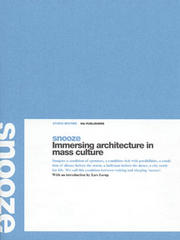

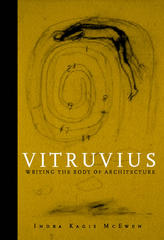
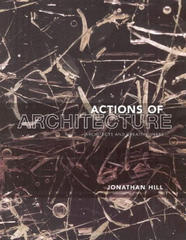
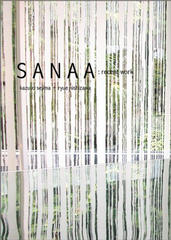
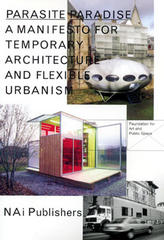
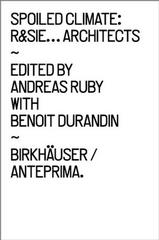
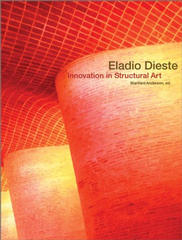
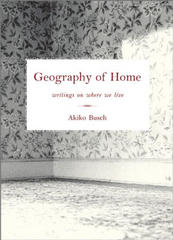
posted by [ j e n n ] at 11:14 AM
1.20.2004
a letter of intent: “I create myself, echo and abyss, by thinking. I multiplied myself, by going deeply into myself. The smallest episode - a change of light, the crumpled fall of a dead leaf, the petal that drops off and commits yellowcide…the half-open gate to the old estate, the patio that opens with an arch onto the houses heaped up in the moonlight - all these things, which do not belong to me, tie my sensory mediation with cords of resonance and nostalgia. In each one of these sensations I am someone else, I renew myself painfully in each indefinite impression.”
These are the moments, the things that occur for only a moment in time that are of concern to me. I have allowed such Sacred moments and thoughts to renew and redefine, perhaps for the first time in actuality, the meaning of what architecture is to me. All of those who sacrifice themselves for this passion of architecture wish and desire to be good, but “to be able to dream inconceivable things by making them visible is one of the great triumphs, one that is rarely attained.” It is this dream then that is to be considered sacred.
For the entirety of a year, nearly four years ago now, I have been lived and poured my thoughts into this idea of an urban monastery. In so doing, I have defined three Great Tensions which exist in the lives of the solitary. First, the tension between Structure of the Order and Freedom of the Spirit. Next, the tension between Diversity of the individual and Unity among the community. Last, the tension found in the desires of Openness to the world while simultaneously retreating from it. It is my belief that these dichotomies defined here in the context of a monastery can be translated into the life of every individual living in a present-day urban setting. If buildings become a reflection of the visual culture and society of the time, then the architecture in question should portray such tensions found among individuals existing within them.
In addressing that these strong paradoxes exist simultaneously, both dependent and independent of each other, like the life of a monk, architecturally this leads to many implications. Freedom and Structure, Diversity and Unity, Openness and Retreat…There is the issue of Private vs. Public, or perhaps Sacred and Profane.
The one thing that interests me most about the two extremes, is that point where the two must come together, where they transition from Sacred into the Profane or vice versa. If seeing sacred as inside and new, and seeing profane as synonymous with outside or old, what has potential of becoming special or what holds significance is the space occurring between the two. Take for example, “a church in a modern city. For a believer, the church shares in a different space from the street in which it stands. The door that opens on the interior of the church actually signifies a solution of continuity. The threshold that separates the two spaces also indicates the distance between two modes of being, the profane and the religious. The threshold is the limit, the boundary, the frontier that distinguishes and opposes two worlds - and at the same time the paradoxical place where those worlds communicate, where passage from the profane to the sacred world becomes possible.” This became a particular driving point of my urban monastery…the creation of that interstitial space, that in-betweeness that contains all the meaning necessary. “The general rule is that soul appears in the gaps and holes of experience.”
Architecturally, how does this transition of sacred to profane occur? How can architecture create that interstitial gap to possess the importance of such a profound experience? Within the pages of a book , there are five times as many thoughts. Within the layers of trace paper found on my desk, there are miles of dream. To accomplish the Great Tensions of modern day society that every individual faces daily, hourly, and perhaps even minute by minute, within a one or two meter space is surely a task.
Light must act as a reconciliation between the sacred and profane, between the outside and the inside. It must change, bend, darken, lighten, move, cry, scream…It must do all things within this space to capture that experience of moving from the everyday to the holy. The life is then breathed into the building through the light and gives the quality of which the sacred is saturated with true being. “The blues would be one thing one day, the blues would be another thing another day, depending on the character of the light…the (space) has as many moods as there are moments in time. Never, as long as the (space) remains as a building, will there be a single day like the other.”
Sacred/holy space has always been something which has captured my attention and affection. After the urban monastery project came time to embark on the fifth year thesis work. I felt very much prepared and eager to begin my “transformations of sacred space.” Here you will find my statement of intent, the guiding words behind my thesis: Through changes over time, the sense of divine, holy space has been lost. This becomes obvious through the examination of church architecture. The splendor and holiness of cathedrals which created the ultimate feeling of divine, holy space has been replaced by gymnasiums and impermanent buildings. A sanctuary should be a place that is completely separate; one that radiates the holiness of God. Plastic cups and folding chairs are not enough. An environment must be created that communicates God's holiness both to the senses and spirit through the technology of modern time.
The thesis became an investigation of the changing conditions which shape the functions of sacred space in the secular modern city; seeking to produce an architecture that responded to temporal realities without losing permanent sacredness; moving the church from the industrial age to the information age; and shifting church architecture from the factory model of corridors to the bionomic model of a living, transformational, learning organism.
One of the guiding forces of my thoughts as of late has been a book entitled “You Are Here: Personal Geographies and Other Maps of the Imagination” by Katharine Harmon. It discusses mapmaking which fulfills one of our most ancient and deep-seated desires: understanding the world around us and our place in it. But maps need not just show continents and oceans, and mythological places. There are maps to popular culture, from Gulliver’s Island to Gilligan’s Island. There are speculative maps of the world before it was known and maps to secret places known only to the mapmaker. There are maps of the mind that show another kind of uncharted realm: the imagination. What all these maps have in common is their creators’ willingness to venture beyond the boundaries of geography or convention.
Somehow the words topography, architecture, sacredness, containment, relationships, cosmology seem to be stewing. The development of a sacred architecture which explains its unique topography---an architecture which reveals and becomes a description of a structured entity, showing the relations among its components (the people directly involved, those indirectly affected, and the world around it).
At the same time exploring this idea of containers & containment---walking thru today’ supermarket one would notice our tendency to package everything (milk, breath strips, computer hard drives, flowers) and likewise have all kinds of methods of holding these packages together (scotch tape, metal hinges, curled ribbons). What is the perfect container for sacred architecture —and how should it be fastened?
Although it has not been completely formulated, and still seems to be in the form of a vague cloud, understand my interest is in sacred architecture, mapping its relationships to the world of today, the need to understand what type of container should hold it and devising a method to keep its sacredness contained within.
..............................................................................................
-Pessoa, Fernando, The Book of Disquiet, Confession 22, p.21.
-Pessoa, Fernando, The Book of Disquiet, Confession 21, p21.
-Eliade, Mircea, The Sacred and the Profane-The Nature of Religion, “Sacred Space and Making the World Sacred,” p.25.
-Thomas Moore, Care of the Soul, “The Soul and Power,” p.120.
-Louis I. Kahn, Light as the Theme, “Kimbell Art Museum Dedication”
posted by [ j e n n ] at 9:33 PM
a present from john to me...invaluable and exactly what i needed right now to feel the sun shining down on my shoulders....the quiet moment of calm right before the storm...in fact he told me that it was taken pre-earthquake shakes...i kind miss those too even---perhaps they would rock me to sleep, and i could pretend to be warm for once:

posted by [ j e n n ] at 9:31 PM
a career objective: I read somewhere once that there is a difference between a "building engineer" and an "architect." With eyes wide open, and feet ready to jump, I have allowed myself to be submersed into this professional life of architecture. And in doing so, the realization is that I have been immersed in some strange mix of building engineering with a mere side of architecture. While building reality and shop drawings are a necessity, so also is the exploration of the mind, the exploration of boundaries to be pushed and pulled. An architect must live this life of co-existence between paper and mind, between fiction and fantasy, between tangible and intangible. He must impossibly balance the practicality of money with the art of imagination. I choose to be an architect.
In my mind, somehow architecture lives somewhere between the sheets of the school studio and the on-site meeting with the builder. Within the trace paper, pencil in hand, no budget to worry about, ideas flow and run freely, able to go beyond the bounds of gravity and concrete. The "idea" of architecture is given it's first breath of life. The office allows the "idea" to achieve "conception" into the physically built realm we live in daily.
It is important that I find this juggling act in my own practice of architecture. I find myself right now working in a firm, working towards Registration, participating in competitions, and going to school or lectures in the evenings to learn about the most recent architectural technologies. In the future I hope to still be working in a firm, Registration in hand, continuing to participate in competitions, still going to school (a teaching position perhaps), and still attending lectures. Practically speaking, much will not drastically change, just a further continuation and further exploration of what is today moving on to tomorrow.
In reality, that is all one can do, choose to be an architect and then keep pushing, pulling, skewing.
posted by [ j e n n ] at 9:30 PM
1.13.2004
so much for true comraderie and buddy-ship...what thurned out to be a moment ary stroke of genius, and suck up the price, i don't care because i miss my friends, turned into an empty inbox, save 3 responses from people who really care...i guess for now, i shall have to pretend that i am smiling alongside with my daily doodle that is not so daily:
posted by [ j e n n ] at 12:07 AM
1.11.2004
1.08.2004
reading thru raefried beans and her strange find of acid trip drawing experiments. strange enough already---but the doctor in the ever-so familiar portrait reminded me of a lawnmoyer who is probably at this very moment waking up, wondering what types of waves he will encounter today.
posted by [ j e n n ] at 8:24 AM
1.07.2004

thank you, brudder, for introducing me to Happy Tree Friends...for those of you interested in what they call "animated mayhem"---"cute, cuddly, and horribly wrong."









posted by [ j e n n ] at 10:04 AM
1.02.2004
last nite was a special evening...candles were lit, prayers were said, hearts were spilled open, strangers played "spoons," children appeared in adults, and the new year was brought in with full acknowledgement that it is by grace alone that we are here to enjoy yet another year of the 2000's. in a little english tudor cottage up in the hillsborough by my home, we shared an evening with 3 other families gathered by the fire, with food and fun with plenty for seconds of both. as the clock grew close the the ticking hour of renewal, seventeen candles were lit each in turn as the holder of each candle said a prayer of thanks and asked a question of heart...where would god have my heart and my will for this year? it was perhaps one of the most memorable new year's yet in my quarter-century of life...and something that i would like to bring to my own future family traditions. instead of confetti and glitter---a clean heart and conscience, a new purpose for the year, an open ear to the heavens, things of the heart which matter---rather than a momentary party, only to be forgotten with the next party...it seems these last few days have been filled with the tiny blazes of candles all around...
here are some pics of my brother from his family bday party---instead of eighteen he looks like he has the same shining in his eyes as when he was five:

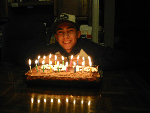
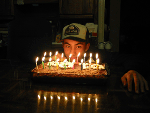
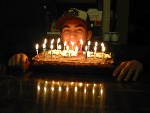
posted by [ j e n n ] at 3:08 AM
+archives+
-
▼
2004
(182)
-
▼
01
(17)
- i think i need to add a "things to do list" to thi...
- modern love store: eames chairs, eames bases, mode...
- i think it's time to start thinking competition ag...
- Baumessen yearly Swiss Eshibition - well, it looks...
- The Architectural Review is the new place to be fo...
- today it is cold....very, very cold...yuk:
- hee hee....look it's me.
- kewl...sacred grass in london.
- more books to add to my wishiful thinking book lib...
- a letter of intent: “I create myself, echo and aby...
- a present from john to me...invaluable and exactly...
- a career objective: I read somewhere once that the...
- so much for true comraderie and buddy-ship...what ...
- california nostalgia already:
- reading thru raefried beans and her strange find o...
- thank you, brudder, for introducing me to Happy ...
- last nite was a special evening...candles were lit...
-
▼
01
(17)
+labels+
- autumn (2)
- beauty (1)
- book (1)
- fall (1)
- health (1)
- inspiration (1)
- melancholy (1)
- missed opportunity (1)
- motivation (3)
- mutualism (1)
- play (1)
- purple (1)
- quote (5)
- read (4)
- sad (2)
- tired (1)
